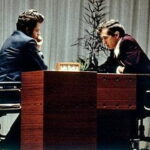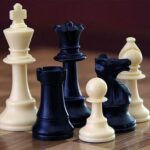Here are some guidelines that were given to me by my old peers from high school when I competed in chess.
1. Control the center of the board: If you are playing white, begin with 1. e4 or 2. d4. Moving the king or queen pawn two spaces is the foundation to a good center.
2. Develop your pieces: Pieces are not the same things as pawn. Maurice Ashley, G.M. once said that “pieces before pawns.” What he means by this is that you should activate your knights and bishops before advancing the pawns. Such good moves after 1.e4 e5 would be 2. nf3 nc6 and 3. bc4 bc5. These pieces will be helpful for tactics in the middlegame as well as the endgame. The outside pawns will be used more towards the endgame for potential promotions to a more desired piece like a queen.
3. Castle early: The ultimate goal in chess is “checkmate.” In order to achieve victory, it is necessary and sufficient to protect your king while attacking your opponent’s king. Once you accomplished guideline #2 in chess (either on the king side or queen side, wherever appropriate), you can castle your king to safety. Not only is your king safe, but castling also develops your rook towards the center of the board. Castling is two fold, and provides a great benefit to your game.
4. Do not bring your queen out too early: There is a good reason for not doing this kind of strategy in the opening. If you bring your queen out early, you may have lower valued pieces like knights and bishops attacking it. These attacks cause your queen to be chased across the board, not allowing your other pieces to be devloped. Thus, you lose time in development. The point is that if you violate this guideline, you will also violate guideline #2. If you desire to bring your queen out, keep her along the 2nd rank along the queen bishop file. By doing this, she is well protected. She also has good sight in attacking other pieces in conjunction with a knight, bishop, or rook.
5. Trade pieces for a good reason: When trading pieces, you need to keep two things in mind: (a) value and (b) position. In regards to (a), one may ask himself, “If I trade piece P1 for piece P2, then will I be up in material?” A good player likes to be up rather than down in material. However, (a) is not all you should consider when trading. (b) is also important as well. Even though (a) may benefit me pointwise, there is still another question to ask. “Does my position look better?” When I mean position, I mean one’s arrangement of their pieces on the board that can lead to checkmate. Sometimes (b) may have more significance than (a) and vice versa. If you know that sacrificing your queen will lead you to victory, by all means do it. After all, sometimes it is not how much material you have left on the board. It is a matter of whether you can capture the opponent’s king, which is based on your position along with some material to mate.
I know there are many more things that a chess player should be aware of. These five guidelines will give such players a good foundation as well as to help them succeed in all their chess games.




